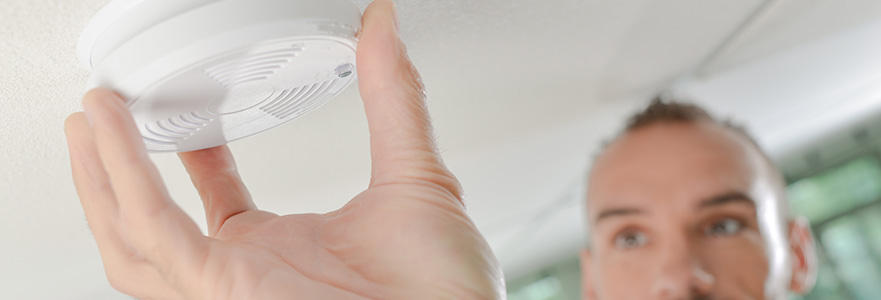Fire detector and heat detector safety
Preventative fire safety protocols
Fires are a leading cause of injury in the United States, plus it’s the country with the highest fire death rate in the world. Many of these injuries and deaths could have been prevented with updated fire safety systems. Oftentimes, people have fire safety systems in place that are no longer functioning which leads to more serious consequences had the technology simply been tested or upgraded.
There are, of course, many instances where there are no fire safety systems installed at all, which is irresponsible when trying to protect your property and anyone in it. There are many different makes and models of fire and heat protection systems, which is why it’s important to talk to an expert on our team at Moore Protection to find out which systems are right for who and what are being protected.
Smoke detectors
Smoke detectors are common in most buildings, but not always required or pre fitted in a space. Just like the saying says, “where there’s smoke, there’s fire” that is how smoke detectors work – they sense smoke and alert a possible fire using an alarming sound. While it sounds simple enough to put a smoke detector in a house, there are some things to consider as well:
- Interconnected smoke alarms are best so when one sounds, they all do
- Testing your devices once a month ensures they’re working properly
- One smoke detector per room, if enclosed by a door
- Consider replacing alarms at least every ten years, but new technology is good to have
- Have a exit plan for leaving the home when an alarm goes off
Losing a home, valuables within a home, or people inside the home to a fire that spreads without warning is something no one wants to experience. So, the first step in fire safety is creating a plan and implementing a system to ensure warnings about smoke and fire.
Heat detectors
We’ve all heard of smoke detectors, but what are heat detectors? Heat detectors are in-home devices that sense any rapid heat increases within a building. Rather than alerting people to evacuate a building because of any smoke or fire on the premises, heat detectors are meant to warn about conditions that may lead to smoke or fire, damaging the home itself.
There are two types of heat detectors — fixed temperature and rate-or-rise. The most popular being the fixed temperature heat detectors which detects temperature rises as a way to alert danger. These are commonly found in residential buildings, warehouses, and stores. Rate-or-rise heat detectors are not used as life-saving devices like smoke detectors, but alarms when certain rooms that often get heated (furnace or laundry rooms) as to suggest air flow is needed or fire could ensue.
Depending on the building that is in question, one or all of the above devices could be necessary. Smoke detectors are always necessary when trying to save future lives. Heat detectors are necessary to preserve room temperature and prevent heat damage caused by smoke or fire.
Learn which fire and heat detectors are right for your spaces with Moore Protection
Fire and heat damage can affect everyone, but there are ways to alert you to the danger before anything gets too far out of hand. Moore Protection offers free security consultation to help find what’s right to protect you, your family, and your home.



